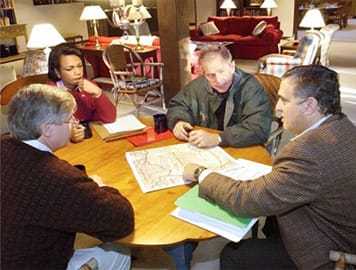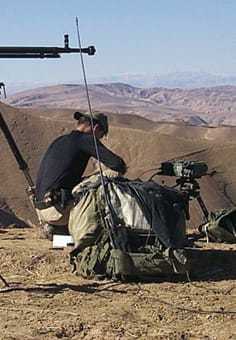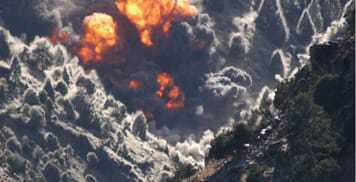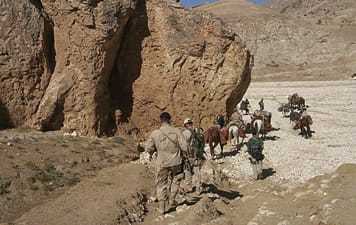About CIA in Afghanistan
In the aftermath of the tragic terrorist attacks of September 11, 2001, President George W. Bush ordered Director of Central Intelligence George Tenet to launch operations against the al-Qa’ida terrorist organization and its Taliban supporters in Afghanistan. This order called for the CIA to collect real-time, actionable intelligence to help shape the battlefield and to use all means to target al-Qa’ida. Within 15 days of the attacks on US soil, the first team of CIA officers was on the ground and operating in Afghanistan–some 8,000 miles from home.

President George W. Bush receives a briefing from CIA Director George Tenet, right, National Security Advisor Condoleezza Rice, and Chief of Staff Andy Card at Camp David, Saturday, 29 September 2001.
This rapid deployment was possible because the CIA had developed and nurtured relationships with the Afghan Northern Alliance for several years prior to 9/11. Because of this thorough, low-key, and persistent effort, CIA officers knew the language, the history, and the culture of the region and were in position to move quickly against the terrorists. In addition to being “first on the ground” in October 2001, the CIA team was able to quickly amass an enormous body of information and a large stable of assets to launch rapid and robust efforts against the Taliban.
As the weeks unfolded, a core group of more than 100 CIA officers–primarily operations and paramilitary officers as well as officers from the Directorate of Support, all highly experienced leaders known for their independence, skill, initiative, and bravery–worked with some 300 US Special Forces personnel and partnered with local tribal and military forces. Team members took risks and worked with key groups in the area, doing whatever was necessary to accomplish the mission.

CIA officers were on the ground in Afghanistan only 15 days after 9/11, collecting intelligence from channels developed over years of hard work.
All-source intelligence enhanced the operations. The networks of sources that the CIA had developed in Afghanistan over the previous two decades provided critical information on the enemy’s capabilities, plans, intentions, and motivations. The overall success of military operations in those first few months is well-documented. Aided by superior firepower and backed every step of the way by a dedicated team of intelligence professionals, the United States and allied forces made significant strides in those early months. Outside Afghanistan, CIA teams with officers representing all Agency directorates supported officers in the field.

The Tora Bora Mountains faced the heaviest bombing in the world since WWII.
The combined efforts of the US Intelligence Community, the US military, Afghan allies, and coalition partners led to swift success. By early December 2001–in less than three months–the Taliban regime had been overthrown, a significant number of the al-Qa’ida leadership had been killed or captured, and a major terrorist safe haven had been eliminated. Through it all, the CIA’s integrated intelligence collection, communications, technology, logistics, and delegated leadership were invaluable to the campaign.

A CIA flight mechanic repainted the tail number, 91101, two short days after arriving in Afghanistan.
Most importantly for the Agency, the lessons learned in those early days of the war against al-Qa’ida–and in the years since–have become part of the CIA’s fabric. We are more agile, adaptive, and collaborative. More than half of our workforce has been hired since 9/11, and integration–internally among our Directorates and externally with our Intelligence Community, military, and other partners–is considered a key component of any Agency success. These changes–developed in part from the war in Afghanistan and the war against al-Qa’ida–will certainly pass the test of time and are already providing a strong base for our future.

The combined efforts of US intelligence, US military forces, Afghan allies, and coalition partners formed the cornerstone of success in Afghanistan.
